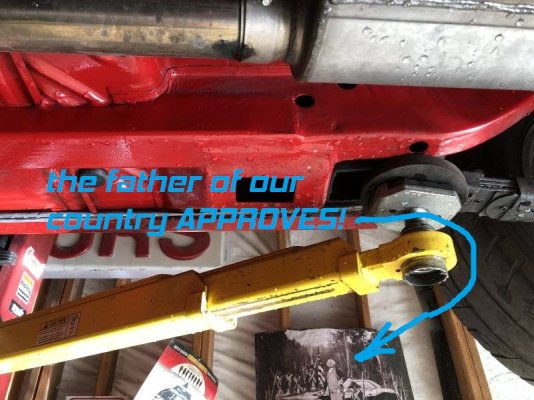After Labor Day, they pull the sidewalks in around here. Some Cruise Nights run another week, but that's about it. We used to meet at a County Park on weekends, but that has "Died Off" literally, as We're all facing the Inevitable. I don't spend a lot of my time just driving these around, as I have another Vice, Off-Roading dirt bikes. A friend has 180 acres, with a 7 mile woods course. It closes Late September, for Deer Season, so I like to get on my bikes, AMAP. Someday, I won't be able to ride, so maybe I'll drive the cars more ???ah.. no. that's the same season as here.... although i tend to drive til salt hits the road which is mid nov-early december... I finally put heat in my garage after 22 years this winter and OMG... wish i had done it 20 years ago. I just went with a ceiling hung electric heater and it makes such a difference it's crazy..
P.S. although when winter kicks in, i go into hibernate mode... i don't do **** outside til it's 40+ out... i hate living up here...
You are using an out of date browser. It may not display this or other websites correctly.
You should upgrade or use an alternative browser.
You should upgrade or use an alternative browser.
Subframe Connectors and unibodies
- Thread starter Rusty knuckles
- Start date
icetech
Well-Known Member
I have never heard of "Pulling the sidewalks in"... And i miss riding, had a accident bout 4 years ago now mountain biking and shattered my shoulder, everything from bout 3" in and down to my elbow is metal/plasticAfter Labor Day, they pull the sidewalks in around here. Some Cruise Nights run another week, but that's about it. We used to meet at a County Park on weekends, but that has "Died Off" literally, as We're all facing the Inevitable. I don't spend a lot of my time just driving these around, as I have another Vice, Off-Roading dirt bikes. A friend has 180 acres, with a 7 mile woods course. It closes Late September, for Deer Season, so I like to get on my bikes, AMAP. Someday, I won't be able to ride, so maybe I'll drive the cars more ???
View attachment 1790050View attachment 1790051View attachment 1790052View attachment 1790053
- Local time
- 2:25 PM
- Joined
- May 14, 2011
- Messages
- 18,954
- Reaction score
- 38,298
- Location
- On the Ridge, TN
Similar threads
- Replies
- 13
- Views
- 3K
- Replies
- 53
- Views
- 8K
- Replies
- 20
- Views
- 4K
- Replies
- 58
- Views
- 13K
















